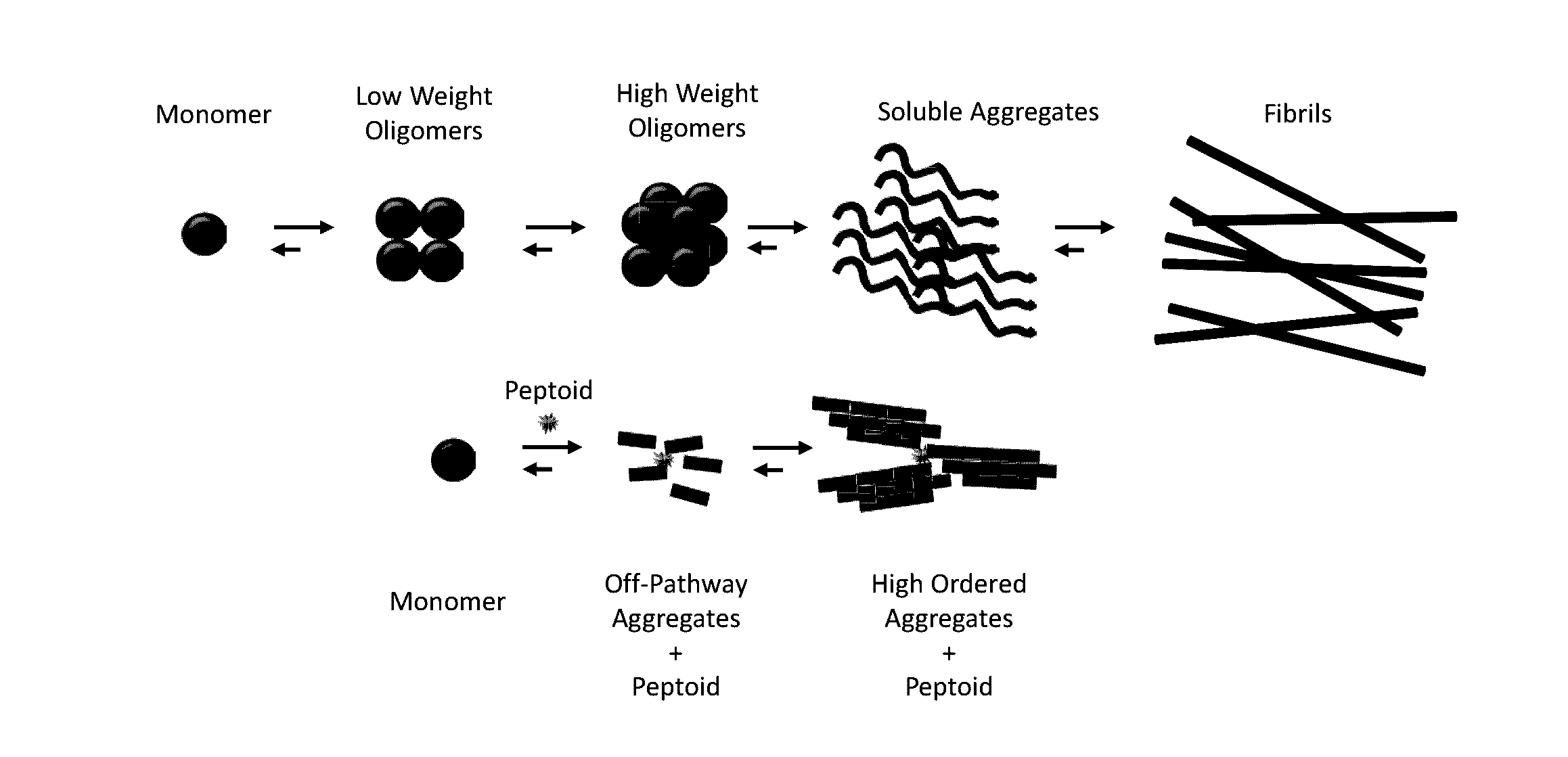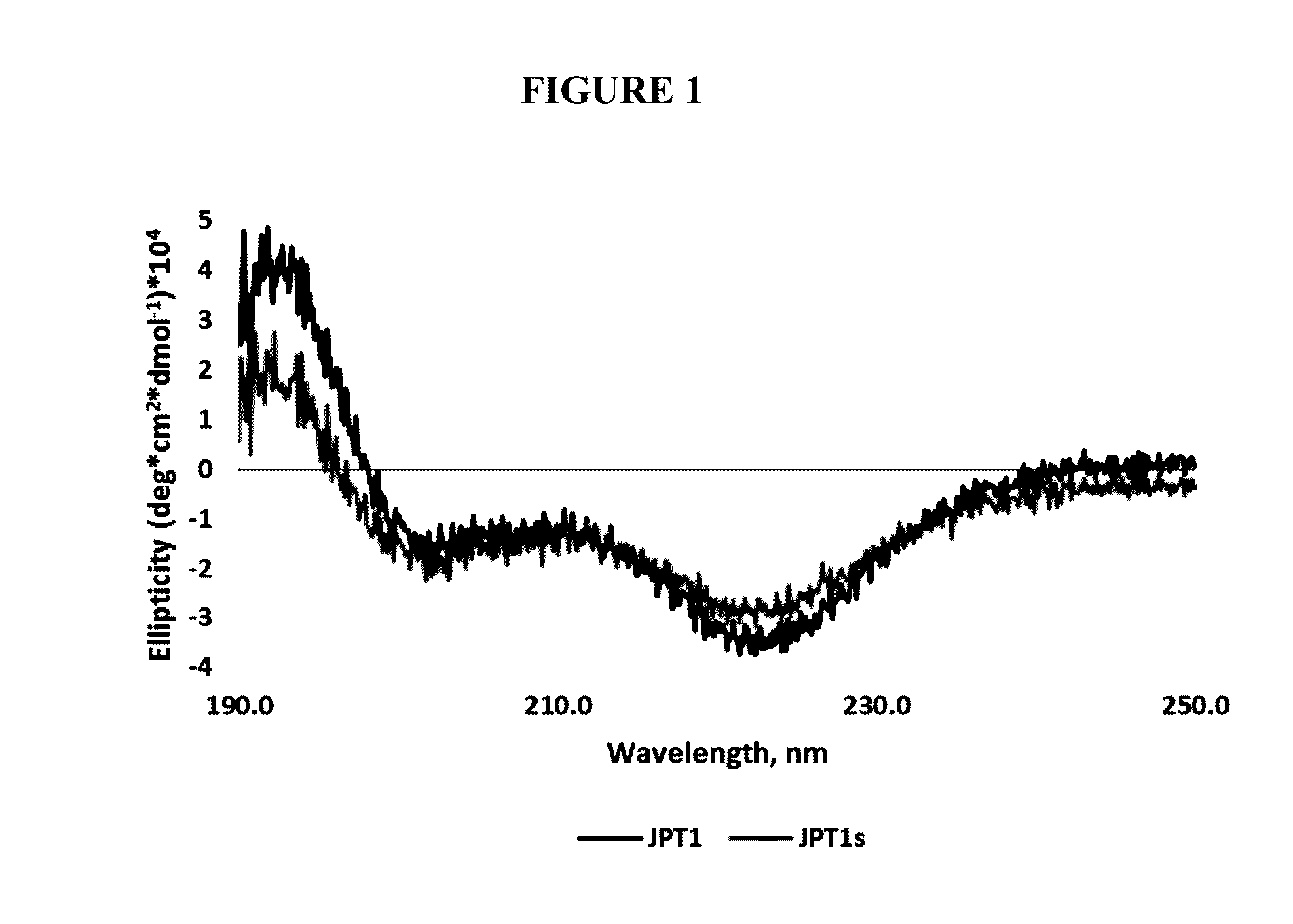Peptoids and methods for treating alzheimer's disease
- Summary
- Abstract
- Description
- Claims
- Application Information
AI Technical Summary
Benefits of technology
Problems solved by technology
Method used
Image
Examples
examples
1. Introduction
[0056]JPT1 (Table 1) was designed to mimic the peptide KLVFF and exhibits a helical secondary structure in both methanol and water (indicated by circular dichroism) as a result of the presence of chiral, aromatic (F-like) and aliphatic (I-like) side chains. It contains adjacent aromatic side chains with ˜6 Å spacing on two faces of the helix. A similar ˜6 Å spacing is observed between contiguous backbone carbons within β-sheets, the secondary structure adopted upon aggregation of Aft This congruence was incorporated within the peptoid design to facilitate pi-pi stacking between the aromatic groups of the peptoid and adjacent F residues within the hydrophobic core of AP. Previous studies of JPT1 showed that the peptoid is able to effectively modulate Aβ40 aggregation by reducing the overall number of β-sheet containing aggregates formed at equilibrium. Turner et al. ACS Chem Neurosci 5: 552-558 (2014). These results indicate that protease-resistant peptoid-based mimics...
PUM
| Property | Measurement | Unit |
|---|---|---|
| Fraction | aaaaa | aaaaa |
| Fraction | aaaaa | aaaaa |
| Fraction | aaaaa | aaaaa |
Abstract
Description
Claims
Application Information
 Login to View More
Login to View More - R&D
- Intellectual Property
- Life Sciences
- Materials
- Tech Scout
- Unparalleled Data Quality
- Higher Quality Content
- 60% Fewer Hallucinations
Browse by: Latest US Patents, China's latest patents, Technical Efficacy Thesaurus, Application Domain, Technology Topic, Popular Technical Reports.
© 2025 PatSnap. All rights reserved.Legal|Privacy policy|Modern Slavery Act Transparency Statement|Sitemap|About US| Contact US: help@patsnap.com



